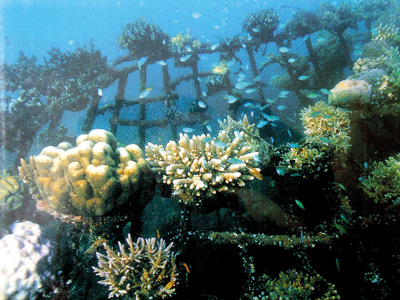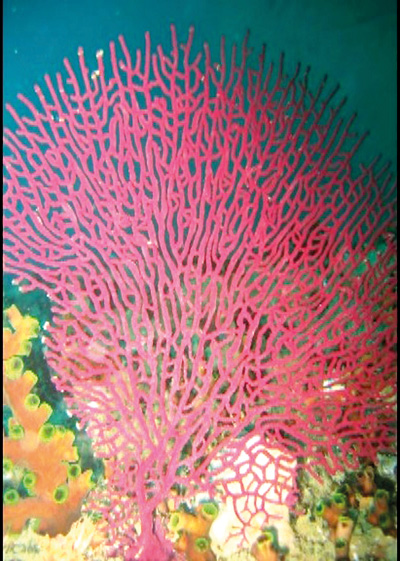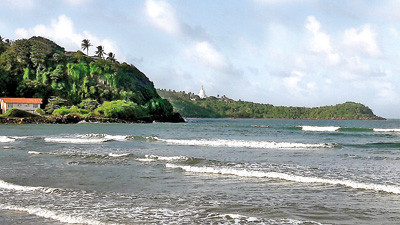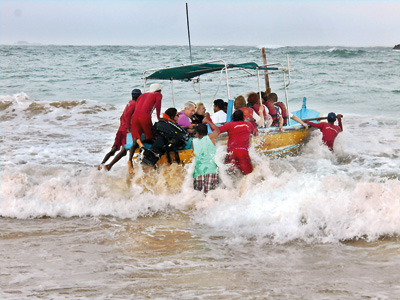News
Replanting to revive southern coral reefs
View(s):Further efforts are underway to protect the coral reefs in the southern coast which are under threat.

A success story: Replanting corals on shipwrecks
A 251 water acre area defined as an ocean biodiversity park was demarcated in 1979. It is famous as an ocean sanctuary for the fauna and flora with rare sea plants and rich biodiversity compared to other similar spots in the globe.
Some 170 coral species have been identified in this zone with around 25 varieties belonging to its own formation. Rare fish species, including singing fish and aquatic culture species can be seen in the coral belt along the Hikkaduwa beach.
The sea flora special to this area has made the sanctuary a tourist destination.
But huge amounts of sand now cover the flora on the sea bed. A similar disaster occurred during the tsunami in 2004.
However, a diver from the area, R. Somadasa, with 6,000 hours of diving within 40 years in the coral area is replanting the coral in the area.
He has been giving diving lessons at the Coral Sands Hotel, Hikkaduwa, since 1968.
In 1997 he planted coral slips in a 10 perch plot and they have turned to be successful.
Mr Somadasa said he is pleased. Coral helps protect the beach, so it is important to conserve the sea flora.
His efforts have dispelled the myth that replanting the coral is not possible. Replanting could be done on shipwrecks.

R. Somadasa
His efforts to replant coral has been tested and preserved in the Hamburg University for research, while he worked in Germany in 1998.
“I was concentrating on blue coral and robbota, in my nurseries.’’
Colombo and Ruhunu universities have helped him in the studies.
“In 1957 there was only a rest house in Hikkaduwa but there are hundreds of hotels and restaurants today. Those days the beach had only the mangroves but they have perished. The making of salt, coral harvesting, and other anti-environmental activities happen regularly, which harm the bio diversity of the sanctuary,’’ Mr Somadasa said.
For visitors to the site, a trip in a glass-bottom boat became a way to see the corals.
In the 50s Tourism Minister R.G. Senanayake helped travel agents by importing such boats from the US. The Coral Gardens Hotel and a chain of hotels also introduced such boat trips.
Mr Neil Fernando, director of Coral Sands introduced the second glass-bottom boat produced locally.
In 1956 the charge was Rs 2 for a ride, but now it is Rs 1,500 and Rs 4,000 for a foreigner.
There are about 68 shipwrecks in the deep sea route in the southern seas and the ones close to Hikkaduwa beach is encroached by the rare fauna and flora.
Text and pictures by Gamini Mahadura

Regrown beauties under the sea


The coral belt area along Hikkaduwa beach

Tourist attraction: Off to see the corals in a glass-bottom boat

